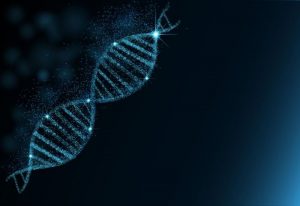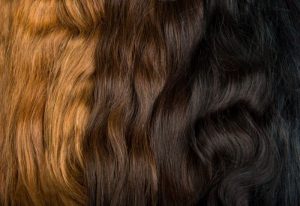There are many products on the market that help us fight the signs of aging, but all of them treat the symptom and not the cause. To get at the underlying factors that cause aging, we have to look at our cells and how they age over time. New studies have found that how our tissues age, and even how we develop gray hair is determined by our biological clock and its effect on individual cells.
How Does Our Biological Clock Affect Each Cell?

Using samples of DNA from more than 8,000 specimens, Horvath examined 51 different types of cells. From this vast collection, he was able to isolate 353 indicators of methylation which revealed signs of the aging process at a cellular level. It was found that these instances of changes in cell activity could establish a clock that showed the aging process in various bodily organs.
In women, it was discovered that breast tissue ages faster than tissue in other parts of the body, Typically, the breast tissue in women is up to three years older than any other part of the female body. As breast cancer develops, the cells in this area undergo an accelerated aging process and can become up to 12 years older than cells in the individual’s healthy tissue. Horvath also found that cancerous tumors appear to be about 36 years older than any other cells in the host’s body, which may help explain why we become more likely to develop cancer as we get older.
Horvath explains that he hopes his research will continue. Ultimately, it’s his intention to use this research to develop more effective methods of slowing aging and fighting cancer.
New Research Discovers Gray Hair Determined By Biological Clock
We all know that going gray is a natural sign of aging and that the chance of growing gray hair increases as we age. However, it’s a fairly unknown fact that when we first develop gray hair is determined by our innate biological clock. Recent research has found that our internal clock can determine when we will start going gray and how quickly gray or white hair will replace our natural hair color.
Our hair color is determined before we’re born, as melanin begins filling in the middle portion of the hair shaft. The amount of melanin, as well as the type, will determine the coloring and shade of our hair. As we age, the level of melanin our bodies produce gradually drops, causing our hair to become lighter and lighter. Eventually, we lose all of the pigmentation in new hair follicles, causing us to grow gray or white hair.
As mentioned, there are different kinds of melanin. People with eumelanin are those who grow darker hair colors, primarily shades of brown and black. Alternatively, shades of red result from the lighter pigmentation that phaeomelanin creates. A combination of these pigmentations helps to create the vast range of hair colors we see in the human population.
In recent research, Dr. Desmond Tobin found that a melanogenic clock determines the rate at which our hair loses its pigmentation. Essentially, it all comes down to heredity and Dr. Tobin believes genetics will determine how rapidly an individual loses pigmentation in their hair follicles. In fact, each follicle will lose pigmentation at its own rate, which explains why we don’t go gray all at once. Since the DNA of each person is unique, how quickly they age and grow gray hair will also differ.
Does Our Hair Have a Biological Clock?

Just like other cells in our bodies, the cells that regulate the health of our hair eventually begin to age. As such, researchers have identified three stages of hair follicle aging:
- Anagen: This is the longest phase and lasts between two to seven years. Approximately 80 percent of your hair is in this phase at any given time and this is considered the healthiest phase for hair. This is a time during which the hair is most vibrant and colorful.
- Catagen: In this phase, hair growth begins to slow. This phase is brief, lasting between 10 and 20 days.
- Telogen: About 10-15 percent of your hair is always in this resting phase, which lasts up to 100 days. This is the final stage before the hair falls out.
Production of Melanin Will Cease Altogether
Since the melanogenic clock is responsible for these various phases, it also helps regulate the production of melanin. As a hair follicle reaches the telogen phase, the melanogenic clock instructs the cells to stop sending melanin to that follicle. This is why you’ll see a white root if you pluck out an older hair.
As we age, this entire system begins to wind down: That’s why gray hair begins to grow more quickly as we grow older. Eventually, the production of melanin will cease altogether, resulting in a full head of gray or white hair. While the rate at which this process slows is different for each person, we will all reach this point sooner or later.







